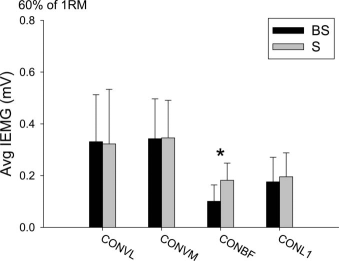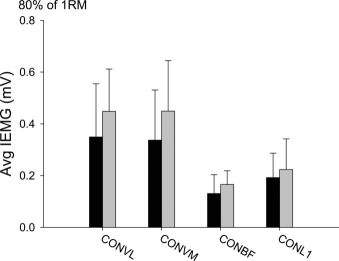
Partial vs Full Range of Movement Exercises
By
Tom McCullough MEd.
We hear all the time in sport that for an athlete, you must do full range of motion exercises to get full benefits. In order for a squat to be of any benefit you much break parallel. Ok, that is true for the sport of Powerlifting because that is the rule, you must break parallel. However, it is really necessary when we train athletes in the weight room? Does an athlete ever get in a below parallel position on the playing field purposely? So if we preach functional training in the weight room perhaps using limited ROM exercises might be more beneficial. That being said, why do we not use box squat training as opposed to doing full squats? With a box squat you can squat more weight as the range of motion is limited. As we know, more weight means greater stimulation of hypertrophy.
McBride, JM, Skinner, JW, Schafer, PC, Haines, TL, and Kirby, TJ. Comparison of kinetic variables and muscle activity during a squat vs. a box squat.J Strength Cond Res 24(12): 3195-3199, 2010-
Abstract
The purpose of this investigation was to determine if there was a difference in kinetic variables and muscle activity when comparing a squat to a box squat. A box squat removes the stretch-shortening cycle component from the squat, and thus, the possible influence of the box squat on concentric phase performance is of interest. Eight resistance trained men (Height: 179.61 ± 13.43 cm; Body Mass: 107.65 ± 29.79 kg; Age: 24.77 ± 3.22 years; 1 repetition maximum [1RM]: 200.11 ± 58.91 kg) performed 1 repetition of squats and box squats using 60, 70, and 80% of their 1RM in a randomized fashion. Subjects completed the movement while standing on a force plate and with 2 linear position transducers attached to the bar. Force and velocity were used to calculate power. Peak force and peak power were determined from the force-time and power-time curves during the concentric phase of the lift. Muscle activity (electromyography) was recorded from the vastus lateralis, vastus medialis, biceps femoris, and longissimus. Results indicate that peak force and peak power are similar between the squat and box squat. However, during the 70% of 1RM trials, the squat resulted in a significantly lower peak force in comparison to the box squat (squat = 3,269 ± 573 N, box squat = 3,364 ± 575 N). In addition, during the 80% of 1RM trials, the squat resulted in significantly lower peak power in comparison to the box squat (squat = 2,050 ± 486 W, box squat = 2,197 ± 544 W). Muscle activity was generally higher during the squat in comparison to the box squat. In conclusion, minimal differences were observed in kinetic variables and muscle activity between the squat and box squat. Removing the stretch-shortening cycle during the squat (using a box) appears to have limited negative consequences on performance.
So, in this study researchers did an experiment with eight well-trained strength athletes. The average maximal weight at which the athletes could manage 1 rep [their 1RM] was 200 kg. They got their subjects to do 1 rep each of ordinary squats [S] and box squats [BS] with 60, 70 and 80 percent of their 1RM. Electrodes attached to the subjects’ leg muscles showed how hard those muscles were working. The researchers only looked at the concentric movement – as the athletes rose up from their squatting position.




Researchers found that at 70 and 80 percent of the 1RM there is no statistically significant difference between the two versions of the squat. "The squat or box squat would most likely result in a similar amount of strength gain with training", the researchers conclude.
One thing this study didn’t look into is the fact that when you shorten the range of motion you are able to add more weight. By adding more weight you are able to increase the amount of stress placed on the muscle, thus stimulate more growth and more strength. This could be a great benefit to athletes.
Further evidence
Hartmann (2012) and Bloomquist (2013) found that partial ROM exercises increased strength in partial ROM exercises by significantly more than full ROM exercises. Weiss (2000) found no significant difference between the full ROM and partial ROM groups but the full ROM group increased partial ROM squat by more than the control group while the partial ROM group did not. Again, none of the above studies utilized heavier weight on the partial ROM training. Which In my opinion would have showed a huge statistical difference in favor of partial ROM training.
How about muscle hypertrophy?
Pinto (2012) found that there was no significant difference in muscle thickness as a result of full ROM and partial ROM training of the elbow flexors. Once again, none of the studies utilized the extra weight that partial ROM training allows.
Being that football players never use a full ROM in a three point stance, it makes no sense to me to do full ROM squats in the weight room. Instead box squats can be used more effectively as more weight can be added, thus stimulating more muscular growth and strength.
Does this transfer to the football field?
Wisloff (2004) found that the higher the 1RM, in other words the more the weight they lifted the higher the players jumped. And the higher the 1RM, the faster the football players managed 10 and 30 metre sprints. So lift ore weight, get more muscle/strength, thus you are able to jump higher and spring faster.
Further, the researchers also found that heavier weights also produced a higher VO2max: a higher maximal oxygen uptake. Which means athletes will be in much better cardio–respiratory shape once season starts.
References
Hartmann H, Wirth K, Klusemann M, Dalic J, Matuschek C, Schmidtbleicher D. Influence of squatting depth on jumping performance. J Strength Cond Res. 2012 Dec;26(12):3243-61.
Bloomquist K, Langberg H, Karlsen S, Madsgaard S, Boesen M, Raastad T. Effect of range of motion in heavy load squatting on muscle and tendon adaptations. Eur J Appl Physiol. 2013 Aug;113(8):2133-42.
WEISS, LAWRENCE W.; FRX, ANDREW C.; WOOD, LARRY E.; RELYEA, GEORGE E.; MELTON, CHARLIE. Comparative Effects of Deep Versus Shallow Squat and Leg-Press Training on Vertical Jumping Ability and Related Factors. J Strength Cond Res. August 2000, (14)3, 241-247.
Pinto RS, Gomes N, Radaelli R, Botton CE, Brown LE, Bottaro M. Effect of range of motion on muscle strength and thickness. J Strength Cond Res. 2012 Aug;26(8):2140-5
U Wisloff, C Castagna, J Helgerud, R Jones, and J Hoff. Strong correlation of maximal squat strength with sprint performance and vertical jump height in elite soccer players. Br J Sports Med. 2004 June; 38(3): 285–288.